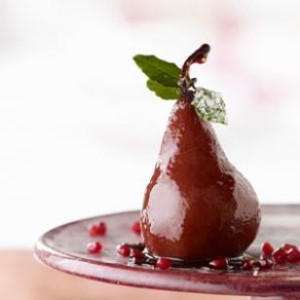Added Sugar and You
Have you ever wondered why there is no nutritional recommendation for added sugar in your diet? There are recommendations for sodium, fat, fiber, and other nutrients, but not sugar. That’s because added sugar is not considered a nutrient. It has no nutritional value. The average American consumes 22 teaspoons of added sugar a day. Added sugar in the diet leads to obesity, diabetes, heart disease, gout and increased risk of cavities. The American Heart Association released recommendations for added sugar in 2009:
- Children-3-4 teaspoons per day
- Women/Adolescent girls-6 teaspoons per day
- Men/Adolescent boys-9 teaspoons per day
Food labels can be confusing so a way to understand is to know that 4 grams of sugar = 1 teaspoon, 24 grams of sugar = 6 teaspoons (100 calories), 36 grams = 9 teaspoons (150 calories).
Some of the worst culprits of added sugar are:
- Soda, juice and sports drinks. The average 12 ounce can of soda has 10 teaspoons of sugar and 150 calories. A 12 ounce glass of orange juice has the same amount of sugar and calories as the soda! Although sports drinks vary in their sugar content, they are loaded with sugar. The primary source of hydration for athletes should be water.
- Ready to eat cereal and bars. Although the first ingredient may not be sugar, most cereals and bars use multiple forms of sugar in their products. Look for cereals and bars that have 5 grams or less of sugar per serving.
- Bakery and bread products. For taste, texture and shelf life, packaged baked goods and breads are loaded with added sugar.
- Condiments and spreads. Ketchup and peanut butter are two of the biggest offenders that have high fructose corn syrup. Look for natural versions that have no added sugar. The only ingredient in peanut butter should be peanuts and salt!
The easiest ways to avoid added sugar in your diet:
- Keep all beverages calorie free. Water is the best natural hydrator. If you want added zing, add some lemon, lime, mint or ginger. Stay away from soda and juice.
- Eat fruit, don’t drink your juice! You will get all the benefit of the fiber and you will have the added benefit of feeling full longer.
- Bake your own cakes and cookies and look for reduced calorie recipes. Stay away from pre-packaged baked goods. When you make your own desserts, you will always use less added sugar.
- Become a sugar detective. Know the different names that sugar goes buy: sucrose, agave, brown sugar, cane crystals, cane sugar, corn sweetener, corn syrup, fructose, fruit juice, glucose, high fructose corn syrup, honey, malt syrup, maple syrup, molasses, raw sugar, syrup, dextrose, invert sugar, ethyl maltol, date sugar, lactose, beet sugar, barley malt and , maltose.
A word about artificial sweeteners. Although it is tempting to use artificial sweeteners to replace those sodas, candies, processed foods and treats you love, they are not the panacea they appear to be. The Journal of Behavioral Neuroscience has shown conclusively that using artificial sweeteners not only does not prevent weight gain, but induces a whole set of physiological and hormonal responses that actually make you gain weight. Your best bet is to stay away from artificial sweeteners (or use them sparingly) and eat whole, unprocessed foods whenever possible.
Pomegranate Poached Pears
From EatingWell: Fall 2003, November/December
Makes: 4 servings
Active Time: 30 minutes
Total Time: 1 1/4 hours
INGREDIENTS
- 4 ripe, firm Bosc pears
- 1 1/2 cups pomegranate juice
- 1 cup sweet dessert wine, such as Muscatel or Riesling
- 1/2 cup pomegranate seeds, (1/2 large fruit; see Tip)
PREPARATION
- Peel pears, leaving them whole and stems intact. Slice off the bases so the pears will stand upright. Use an apple corer to remove cores, if desired, working from the base up.
- Place the pears on their sides in a large saucepan or small Dutch oven. Pour pomegranate juice and wine over the pears. Bring to a simmer over medium-high heat. Cover, reduce heat to low and simmer gently until the pears are tender when pierced with the tip of a sharp knife, 30 to 45 minutes. Turn very gently once or twice as they cook so they color evenly. Using a slotted spoon, transfer the pears to a shallow bowl and set aside.
- Boil the poaching liquid over high heat until the sauce is reduced to 1/2 cup, 15 to 20 minutes.
- To serve, spoon 1 tablespoon sauce onto each of 4 dessert plates. Place a pear upright on each plate. Drizzle remaining sauce over each pear and sprinkle pomegranate seeds around it.
TIPS & NOTES
- Make Ahead Tip: Prepare through Step 3. Cover and refrigerate pears in sauce for up to 2 days. Serve at room temperature.
- Tip: Fill a large bowl with water. Hold the pomegranate in the water and slice off the crown. Lightly score the fruit into quarters, from crown to stem end. Keeping the fruit under water, break it apart, gently separating the plump seeds from the outer skin and white pith. The seeds will drop to the bottom of the bowl and the pith will float to the surface. Discard the pith. Pour the seeds into a colander. Rinse and pat dry.
NUTRITION
Per serving: 303 calories; 4 g fat ( 1 g sat , 2 g mono ); 6 mg cholesterol; 53 g carbohydrates; 0 g added sugars; 2 g protein; 7 g fiber; 22 mg sodium; 559 mg potassium.




